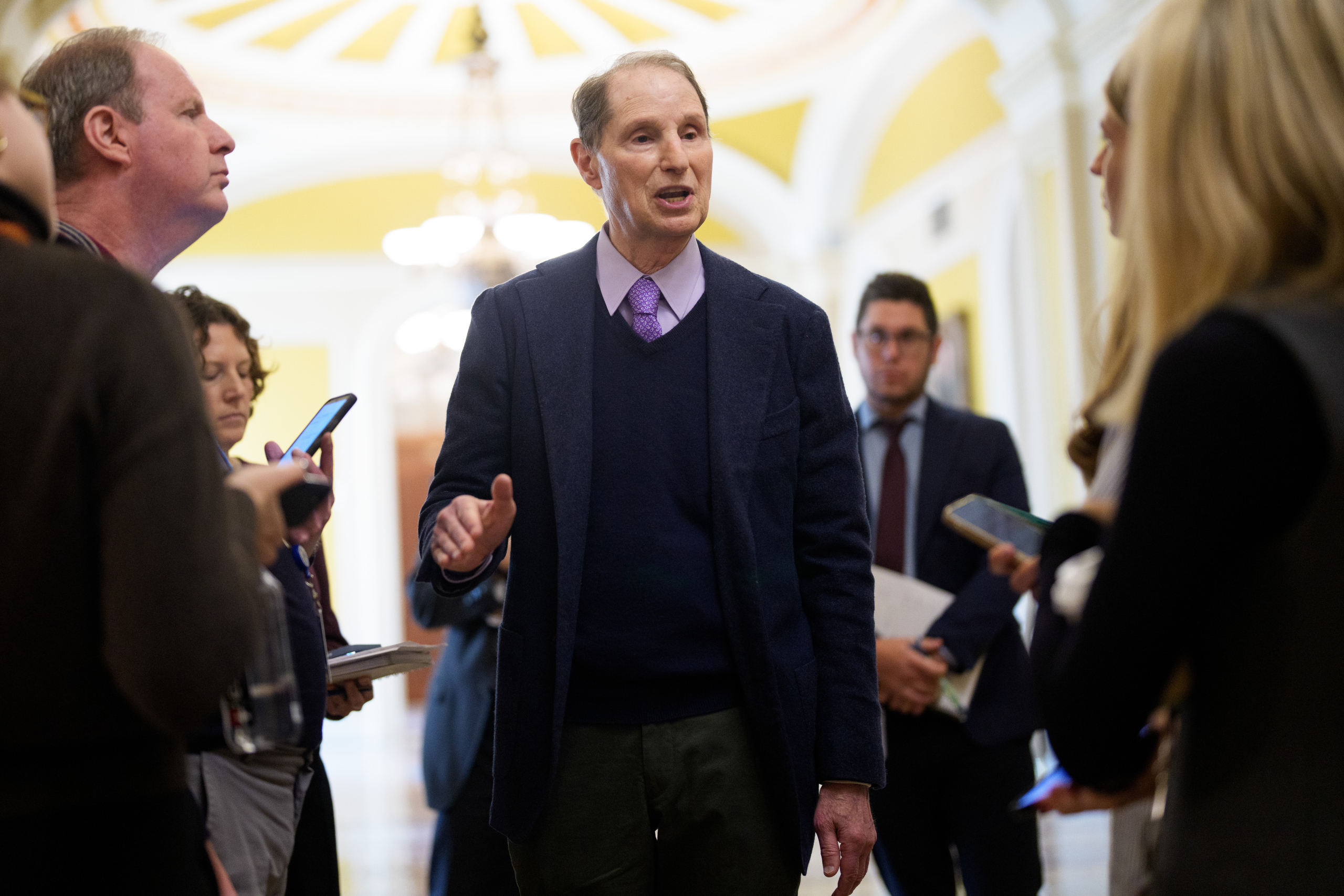Thought of the Day

Doubt whom you will, but never yourself.


Doubt whom you will, but never yourself.

CHAPEL HILL, N.C. (AP) — No. 25 North Carolina senior guard Seth Trimble is out indefinitely after suffering a broken left forearm during a workout on Sunday.
The school said a timetable for Trimble’s return will be determined following surgery this week.
“So sad for Seth,” North Carolina coach Hubert Davis said in a statement. “He’s such a great kid and teammate and has worked so hard for his senior year. He loves being a Tar Heel and we love him. The good news is he will be back at some point this year, and I know he will continue to be a great leader for us until he can get back in the lineup.”
Trimble entered the season as a team leader on a roster with 11 new players and had a huge immediate impact in the Tar Heels’ 87-74 win over No. 19 Kansas on Friday.
The 6-foot-3, fourth-year player rebounded from a quiet first half to score 13 of his 17 points in the second as North Carolina rallied from an eight-point halftime deficit. Trimble also played a crucial role defensively, helping to slow Kansas star freshman Darryn Peterson in the second half.
Trimble averaged 11.7 points per game last season, an increase of more than six points from 2023-24.

By MARY CLARE JALONICK and LISA MASCARO Associated Press
WASHINGTON (AP) — The Senate is voting on the first steps to end the 40-day government shutdown Sunday after a group of moderate Democrats agreed to proceed without a guaranteed extension of health care subsidies, angering many in their caucus who wanted to continue the fight.
The group of three former governors — New Hampshire Sen. Jeanne Shaheen, New Hampshire Sen. Maggie Hassan and Independent Sen. Angus King of Maine — said they would vote to reopen if the Senate passed three annual spending bills and extend the rest of government funding until late January. Senate Majority Leader John Thune endorsed the deal Sunday night and called an immediate vote to begin the process of approving it.
“The time to act is now,” Thune said.
The deal would also include a future vote on the health care subsidies, which would not have a guaranteed outcome, and a reversal of the mass firings of federal workers that have happened since the shutdown began on Oct. 1. The full text of the deal has not yet been released.
“We must not delay any longer,” Senate Appropriations Committee Chairwoman Susan Collins said in a Senate floor speech, adding that she is “relieved” that the shutdown appeared headed toward an end.
Republicans need five Democratic votes to reopen the government. In addition to Shaheen, King and Hassan, Democratic Sen. Tim Kaine of Virginia, home to millions of federal workers, also said he would support the agreement.
After Democrats met for over two hours to discuss the proposal, Senate Democratic leader Chuck Schumer said he could not “in good faith” support it.
“America is in the midst of a Republican-made health care crisis,” Schumer said on the floor just ahead of the expected votes. He said Americans would “suffer immensely” and that the crisis would only get worse.
“Democrats have sounded the alarm,” Schumer said, and “will not give up the fight.”
Final passage of the legislation could take several days if Democrats object and draw out the process. Independent Sen. Bernie Sanders of Vermont, who caucuses with the Democrats, said that giving up the fight was a “horrific mistake.”
Republicans have been working with the group of moderates as the shutdown continued to disrupt flights nationwide, threaten food assistance for millions of Americans and leave federal workers without pay. But many Democrats have warned their colleagues against giving in, arguing that they can’t end the fight without an agreement to extend the health subsidies.
Returning to the White House on Sunday evening after attending a football game, Trump did not say whether he endorsed the deal. But he said, “It looks like we’re getting close to the shutdown ending.”
Democrats have now voted 14 times not to reopen the government as they have demanded the extension of tax credits that make coverage more affordable for health plans offered under the Affordable Care Act. Republicans have refused to negotiate on the health care subsidies while the government is closed, but they have been supportive of the proposal from moderate Democrats as it emerged over the last several days.
The agreement would fund parts of government — food aid, veterans programs and the legislative branch, among other things — and extend funding for everything else until the end of January. It would take up Republicans on their longstanding offer to hold a future vote on the health care subsidies, with that vote occurring by the middle of December, the people said.
The deal would reinstate federal workers who had received reduction in force, or layoff, notices and reimburses states that spent their own funds to keep federal programs running during the shutdown. It would also protect against future reductions in force through January, the people said, and guarantee all federal workers would be paid once the shutdown is over.
“I have long said that to earn my vote, we need to be on a path toward fixing Republicans’ health care mess and to protect the federal workforce,” Kaine said.
Alongside the funding fix, Republicans released final legislative text of three full-year spending bills Sunday. That legislation keeps a ban on pay raises for lawmakers but boosts their security by $203.5 million in response to increased threats. There’s also a provision championed by Sen. Mitch McConnell, R-Ky., to prevent the sale of some hemp-based products.
Republicans only need five votes from Democrats to reopen the government, so a handful of senators could end the shutdown with only the promise of a later vote on health care. Around 10 to 12 Democrats have been involved in the talks, and the three people familiar with the agreement said they had enough votes to join with Republicans and pass the deal.
Many of their Democratic colleagues are saying the emerging deal is not enough.
“I really wanted to get something on health care,” said Michigan Sen. Elissa Slotkin. “I’m going to hear about it right now, but it doesn’t look like it has something concrete.”
House Democrats were also chiming in against it. Texas Rep. Greg Casar, the chairman of the Congressional Progressive Caucus, said a deal that doesn’t reduce health care costs is a “betrayal” of millions of Americans who are counting on Democrats to fight.
“Accepting nothing but a pinky promise from Republicans isn’t a compromise — it’s capitulation,” Casar said in a post on X. “Millions of families would pay the price.”
Rep. Angie Craig of Minnesota posted that “if people believe this is a ‘deal,’ I have a bridge to sell you.”
Even if the Senate were to move forward with funding legislation, getting to a final vote could take several days if Democrats who oppose the deal object and draw out the process. The first vote, which could come as soon as Sunday evening, would be to proceed to consideration of the legislation.
There is no guarantee that the Affordable Care Act subsidies would be extended if Republicans agree to a future vote on health care. House Speaker Mike Johnson, R-La., has said he will not commit to a health vote.
Some Republicans have said they are open to extending the COVID-19-era tax credits as premiums could skyrocket for millions of people, but they also want new limits on who can receive the subsidies and argue that the tax dollars for the plans should be routed through individuals.
Other Republicans, including Trump, have used the debate to renew their yearslong criticism of the law and called for it to be scrapped or overhauled.
“THE WORST HEALTHCARE FOR THE HIGHEST PRICE,” Trump said of the Affordable Care Act in a post Sunday.
Meanwhile, the consequences of the shutdown were compounding. U.S. airlines canceled more than 2,000 flights on Sunday for the first time since the shutdown began, and there were more than 7,000 flight delays, according to FlightAware, a website that tracks air travel disruptions.
Treasury Secretary Sean Duffy said on CNN’s “State of the Union” that air travel ahead of the Thanksgiving holiday will be “reduced to a trickle” if the government doesn’t reopen.
At the same time, food aid was delayed for tens of millions of people as Supplemental Nutrition Assistance Program benefits were caught up in legal battles related to the shutdown. More than two dozen states warned of “catastrophic operational disruptions” as Trump’s administration is demanding states “undo” benefits paid out under judges’ orders last week, now that the U.S. Supreme Court has stayed those rulings.
And in Washington, home to millions of federal workers who have gone unpaid, the Capital Area Food Bank said it is providing 8 million more meals than it had prepared to this budget year — a nearly 20% increase.
___
Associated Press writers Stephen Groves and Kevin Freking contributed to this report.

By STEVE REED AP Sports Writer
CHARLOTTE, N.C. (AP) — Tyler Shough threw for 282 yards and two touchdowns, and the New Orleans Saints defeated the Carolina Panthers 17-7 on Sunday to snap a four-game skid.
Shough — a rookie who began the season as the Saints’ backup QB — connected on a 62-yard scoring strike to Chris Olave and a 30-yard TD pass to Juwan Johnson to earn his first win as a starter. Alvin Kamara ran for 83 yards for the Saints (2-8).
Olave finished with five catches for 104 yards as the Saints outgained the Panthers 388 yards to 175.
Bryce Young was limited to 124 yards passing and turned the ball over twice as his four-game win streak as a starter ended. Rico Dowdle had 53 yards and a touchdown on 18 carries for Carolina (5-5).
Dowdle got the Panthers on the board with a 5-yard TD run on the opening possession, and it looked like it might be Carolina’s day. Dowdle, who was fined last week for his “two pumps” touchdown celebration, lined up like he was going to do it again — but this time didn’t make any pelvic thrusts.
But the Panthers regressed from there, with their next five first-half possessions resulting in 36 net yards and four punts.
The Saints took advantage. Olave beat Carolina’s best cover cornerback, Jaycee Horn, for a long TD to give New Orleans a 10-7 lead at halftime.
Carolina’s 83 yards in the first half were its fewest this season, and not much improved in the second half.
The Panthers appeared to catch a break in the third quarter after the Saints blocked a field-goal try by Ryan Fitzgerald, but had one of their linemen touch the live ball. Carolina recovered and got a new set of downs.
But just a few plays later, Young fumbled a handoff to wide receiver Jimmy Horn Jr. and the Saints got the ball back.
Carolina had another shot after Nic Scourton sacked Shough on fourth down, but Young followed with an underthrown pass down the right sideline that was picked off by Alontae Taylor.
This time, the Saints took advantage, with Shough finding a wide-open Johnson down the left sideline for a 30-yard touchdown to make it a two-possession game.
Panthers: TE Michell Evans (ankle) left in the first half and linebacker Trevin Wallace (shoulder) exited in the second half.
Saints: Have a bye next week before hosting Atlanta on Nov. 23.
Panthers: At Atlanta on Sunday.

By ANDREW DALTON AP Entertainment Writer
LOS ANGELES (AP) — The Rock & Roll Hall of Fame has inducted its 2025 class of music giants.
The ceremony held Saturday at Los Angeles’ Peacock Theater was a mix of tributes, speeches and performances by acts like Soundgarden, Salt-N-Pepa and Big Boi of Outkast, along with numerous A-list musical guests.
Artists become eligible for the hall 25 years after their first music release.
Here’s a look at this year’s Rock Hall class, a few of their defining songs and who inducted them.
American rap duo that began in the 1990s. Key songs: “Hey Ya,” “Ms. Jackson” and “Roses.”
Inducted by Donald Glover. Medley performance included Big Boi, Janelle Monáe, JID, Doja Cat, Killer Mike, Sleepy Brown
English rock band formed in the 1970s. Key songs: “Feel Like Makin’ Love,” “Can’t Get Enough,” “Bad Company.”
Inducted by Mick Fleetwood. Bad Company drummer Simon Kirke was joined by Nancy Wilson of Heart and Joe Perry of Aerosmith on guitars and Black Crowes lead singer Chris Robinson on vocals.
American singer and songwriter whose solo career began in the early 1980s. Key songs: “Girls Just Wanna Have Fun,” “Time After Time,” “True Colors.”
Inducted by Chappell Roan. Lauper performed a medley of her hits, including duets with Avril Lavigne, Raye and Salt-N-Pepa.
American rock band formed in 1984. Key songs: “Black Hole Sun,” “Fell on Black Days,” and “Outshined.”
Inducted by Jim Carrey. Surviving Soundgarden members performed with Taylor Momsen and Brandi Carlile, who took the place of late vocalist Chris Cornell. Cornell’s daughter, Toni, also performed with Nancy Wilson.
American rap group formed in the 1980s. Key songs: “Push It,” “Let’s Talk About Sex” and “Shoop.”
Inducted by Missy Elliott, the group performed a medley of their hits with a special appearance from En Vogue.
American singer who began releasing records in the 1950s. Key songs: “The Twist,” “Limbo Rock,” “Let’s Twist Again.”
Inducted via video tribute. Checker accepted remotely via a video feed.
English singer who began releasing records in the 1960s and died in 2014. Key songs: “You Are So Beautiful,” “Up Where We Belong,” “With a Little Help From My Friends.”
Inducted by Bryan Adams. Medley performance by Teddy Swims, Tedeschi Trucks Band, along with Adams, Lauper, Chris Robinson and Nathaniel Rateliff who took the stage for a rendition of “With A Little Help from My Friends.”
American rock band that began in the 1990s. Key songs: “Seven Nation Army,” “We’re Going to Be Friends,” “Doorbell.”
Inducted by Iggy Pop. Tribute performance by Olivia Rodrigo, Feist and Twenty One Pilots.
American singer-songwriter who began releasing solo records in the early 1970s and died in 2003. Key songs: “Lawyers, Guns and Money,” “Werewolves of London,” “Keep Me in Your Heart.”
Inducted by David Letterman. Honored with performance by the Killers.
American session musician who played on scores of hits starting in the 1950s, primarily on bass. Key songs: The Beach Boys’ “Good Vibrations,” Nancy Sinatra’s “These Boots are Made for Walkin’,” Barbra Streisand’s “The Way We Were.”
Inducted via video tribute.
American music producer and songwriter starting in the 1960s who died in 2022. Key songs: the Delfonics’ “La-La (Means I Love You),” the Spinners’ “The Rubberband Man,” the Stylistics’ “You Make Me Feel Brand New.”
Inducted via video tribute.
English session musician who played keyboards on dozens of hits starting in the 1960s and died in 1994. Key songs: the Beatles’ “Revolution,” the Rolling Stones’ “Sympathy for the Devil,” Cocker’s “You Are So Beautiful.”
Inducted via video tribute.
American music producer and executive starting in the 1970s. Key songs from artists he produced or signed: Rickie Lee Jones’ “Chuck E’s in Love,” Prince’s “Purple Rain,” R.E.M.’s “Losing My Religion.”
Inducted via video tribute.

By JOHN SEEWER Associated Press
U.S. airlines canceled more than 2,500 weekend flights by Saturday evening as the Federal Aviation Administration’s mandate to reduce air traffic because of the government shutdown showed no signs of easing.
The slowdown at many of the nation’s busiest airports did not cause immediate widespread disruptions. But it deepened the impact felt by the nation’s longest federal shutdown.
“We all travel. We all have somewhere to be,” said Emmy Holguin, 36, who was flying from Miami to see family in the Dominican Republic. “I’m hoping that the government can take care of this.”
Analysts warn that the upheaval will intensify and spread far beyond air travel if cancellations keep growing and reach into Thanksgiving week.
Already there are concerns about the squeeze on tourism destinations and holiday shipping.
Here’s what to know about the flight reductions:
Cancellations jumped Saturday — typically a slow travel day — to more than 1,500, following just over 1,000 the previous day, according to the tracking website FlightAware. By the evening U.S. airlines already had canceled another 1,000-plus for Sunday.
Airports in Atlanta and Chicago, as well as Charlotte, North Carolina, and Newark, New Jersey, saw numerous disruptions throughout the day. Ongoing staffing shortages in radar centers and control towers added to the cancellations and delays at several East Coast airports, including those around New York City.
Not all the cancellations were due to the FAA order, and those numbers represented just a small portion of the overall flights nationwide. But they are certain to rise in the coming days if the slowdown continues.
The FAA said the reductions impacting all commercial airlines started at 4% of flights at 40 targeted airports and will be bumped up again Tuesday before hitting 10% on Friday.
Transportation Secretary Sean Duffy warned this week that even more cuts might be needed if the shutdown continues and more air traffic controllers are off the job.
Controllers have gone without paychecks for nearly a month during the shutdown, leading many to call in sick and compound previously existing staffing shortages.
Most are working mandatory overtime six days a week during without pay, and some are taking second jobs to pay their bills, the National Air Traffic Controllers Association has said.
On Saturday the union said it had delivered 1,600 handwritten letters from members to Congress calling for the shutdown to end.
Most were relieved to find that airlines largely stayed on schedule Friday, and those whose flights were called off were able to quickly rebook. So far, longer international flights have not been interrupted.
There is still a lot of uncertainty about which flights will be canceled next.
And not everyone has the means to pay for a hotel or deal with a last-minute disruption, said Heather Xu, 46, who was in Miami on Saturday after a cruise and flying home to Puerto Rico.
“Travel is stressful enough. Then you put these disruptions in place, and it really makes everything more challenging,” she said.
Rental car companies reported a sharp increase in one-way reservations Friday, and some people simply canceled flights altogether.
Diana Alvear of Bridgewater, New Jersey, scratched her family’s trip next weekend to see in-laws in California because of concerns about flying when controllers are working long hours and understaffed.
She also was nervous about being stranded, which would be “a huge debacle” for work. United Airlines gave her credit for the airfare, but the family is still out nearly $700 for the deposit on an Airbnb.
“This has been costly to us, and it’s a huge disappointment for us and our family,” Alvear said. “It’s really weighing on our hearts that we had to do this.”
First there is the potential for higher prices in stores, as nearly half of U.S. air freight is shipped in the bellies of passenger aircraft.
Major flight disruptions could bring higher shipping costs that get passed on to consumers, said Patrick Penfield, professor of supply chain practice at Syracuse University.
Further losses will ripple through the economy if the slowdown continues, from tourism to manufacturing, said Greg Raiff, CEO of Elevate Aviation Group.
“This shutdown is going to impact everything from cargo aircraft to people getting to business meetings to tourists being able to travel,” Raiff said. “It’s going to hit the hotel taxes and city taxes. There’s a cascading effect that results from this thing.”
___
Associated Press journalists Cody Jackson in Miami, Paul Wiseman in Washington, Josh Funk in Omaha, Nebraska, and Anne D’Innocenzio in New York contributed.


Today is a perfect day to do better.

By BOB SUTTON Associated Press
RALEIGH, N.C. (AP) — The injury-ravaged Carolina Hurricanes found new sources of offense from two rookie defensemen, and the pair made team history in the process.
Charles Alexis Legault and Joel Nystrom picked up their first NHL points in Saturday night’s 6-3 win over the Buffalo Sabres.
Their performance marked the first time in the Hurricanes’ team history that two defensemen posted their first points in the same game. And, it was the fourth time in Carolina history — since the relocation from Hartford — that any two players recorded their first points in a game.
Legault had an assist and an empty-net goal, and Nystrom assisted on a goal early in the third period as Carolina extended its winning streak to three games.
“We don’t judge their game based on that,” Hurricanes coach Rod’Brind’Amour said. “But those are nice little bonuses for them. Both guys have been solid. We ask a lot of them.”
Legault scored by sending the puck nearly the length of the ice into the unattended net with 1:28 remaining in the game. But, his first point came when he assisted on Eric Robinson’s goal 29 seconds into the third period.
“You dream of scoring one since you’ve been a kid, so being able to get one tonight is a great feeling,” Legault said.
Nystrom’s assist came on Jesperi Kotkaniemi’s score 29 seconds into the third that extended Carolina’s lead to 3-1.
“Today I got my first point and I’m real happy for that,” Nystrom said. “… (Kotkaniemi) he did a really good shot. I have to thank him, too.”
In franchise history combining Hartford and Carolina, Mark Howe and Charles Luksa were the last defensive pair to get their first career points in the same game, in October 1979.
Legault and Nystrom have been living together since their somewhat unexpected additions to the NHL team this fall.
“We spent a lot of time together the last couple of weeks,” Nystrom said.
Carolina played without defenseman Jalen Chatfield for the first time this season. He left Thursday night’s game with an upper-body injury after a blow to the head from Minnesota’s Tyler Pitlick, who was assessed a match penalty.
The Hurricanes have been without defensemen Jaccob Slavin and Shayne Gostisbehere for more than a week. That twosome, plus Chatfield, all played in 70 or more games last season.
The Hurricanes also recalled defenseman Gavin Bayreuther from Chicago of the AHL earlier Saturday, but he was a healthy scratch.

DOUG BONJOUR Associated Press
CHAPEL HILL, N.C. (AP) — Gio Lopez threw for two second-half touchdowns and North Carolina’s defense relentlessly pressured Elijah Brown as the Tar Heels beat Stanford 20-15 Saturday for their second straight victory in Atlantic Coast Conference play.
Jordan Shipp led the Tar Heels (4-5, 2-3 ACC) with 83 yards receiving on five catches. His 55-yard touchdown grab extended the lead to 20-3 early in the fourth quarter. Lopez, who was 18 of 25 for 203 yards passing, also connected with Davion Gause for a 20-yard score.
“Good win,” coach Bill Belichick said. “Good to win at home. Always good to win at home. Proud of our team.”
Brown, a redshirt freshman making his first start this season and the second of his career, threw for 268 yards with one touchdown and one interception but was also sacked nine times.
Two late touchdowns, including a 24-yard catch by CJ Williams, made it a one-score game with 1:48 to play, but it was too little, too late for Stanford (3-7, 2-5 ACC), which dropped its third straight.
Williams finished with six catches for 61 yards, while Caden High added 10 receptions for 102 yards.
“I’m really happy with how Elijah fought back,” coach Frank Reich said. “Obviously, some of the protection stuff, he was just trying to hold on. He didn’t flinch, it didn’t faze him.”
The first half featured just 147 total yards and as many punts (six) as points.
Fittingly, North Carolina’s defense set up the first score when Andrew Simpson stripped Brown, allowing Smith Vilbert to recover at the Stanford 7. That led to a Rece Verhoff 27-yard field goal.
The Tar Heels’ 3-0 lead after the first quarter was their first since a Sept. 13 win over Richmond.
Ethan Kenney converted a 38-yard field goal on the half’s final play, making up for an earlier miss.
Stanford: Brown got into a rhythm after a quiet start, but protection issues were too much to overcome.
North Carolina: Considering how bleak things have looked early in Belichick’s tenure, the Tar Heels will take all the wins they can get. Sneaking into a bowl game is still a possibility.
Melkart Abou Jaoude had three sacks, giving him eight in the last three games and 10 this season. Tyler Thompson also had three sacks and Simpson added two.
“When our defense shows up like that — they’ve been showing up the last couple of games — we’ve got to respond to them,” Lopez said. “It’s complementary football.”
Stanford hosts California on Nov. 22 following a bye.
North Carolina visits Wake Forest next Saturday.

NEW YORK (AP) — The Rockefeller Center Christmas tree was hoisted aloft at its new home in Manhattan on Saturday, marking the start of New York City’s holiday season.
This year’s tree is a 75-foot-tall (23-meter-tall) Norway spruce from the upstate town of East Greenbush, a suburb of Albany. After being cut down this week, it made the roughly 150-mile (240-kilometer) journey south on a flatbed truck, drawing curious onlookers along the way.
The crowds were much bigger at 30 Rockefeller Plaza, where workers used cranes to hoist the 11-ton tree into position overlooking the iconic skating rink. People gathered with coffee cups and phones as crews secured the spruce and began the careful process of stabilizing it.
The tree will be soon be decorated with more than 50,000 multicolored, energy-efficient LED lights and crowned with a Swarovski star weighing 900 pounds (408 kilograms).
It will be lit Dec. 3 during a live TV broadcast hosted by country music star Reba McEntire and remain on display until mid-January, after which it will be milled into lumber for use by the affordable housing nonprofit Habitat for Humanity.
The tree was donated by homeowner Judy Russ and her family. She said it was planted by her husband’s great-grandparents in the 1920s.
“For this to now become the center of New York City Christmas is incredible,” Russ told the radio station 1010 WINS.
The first Rockefeller Center Christmas tree was put up by workers in 1931 to raise spirits during the Great Depression. The comparatively modest 20-foot (6-meter) balsam fir was outfitted with garlands handmade by the workers’ families.
The tradition stuck as the first tree-lighting ceremony was held in 1933.